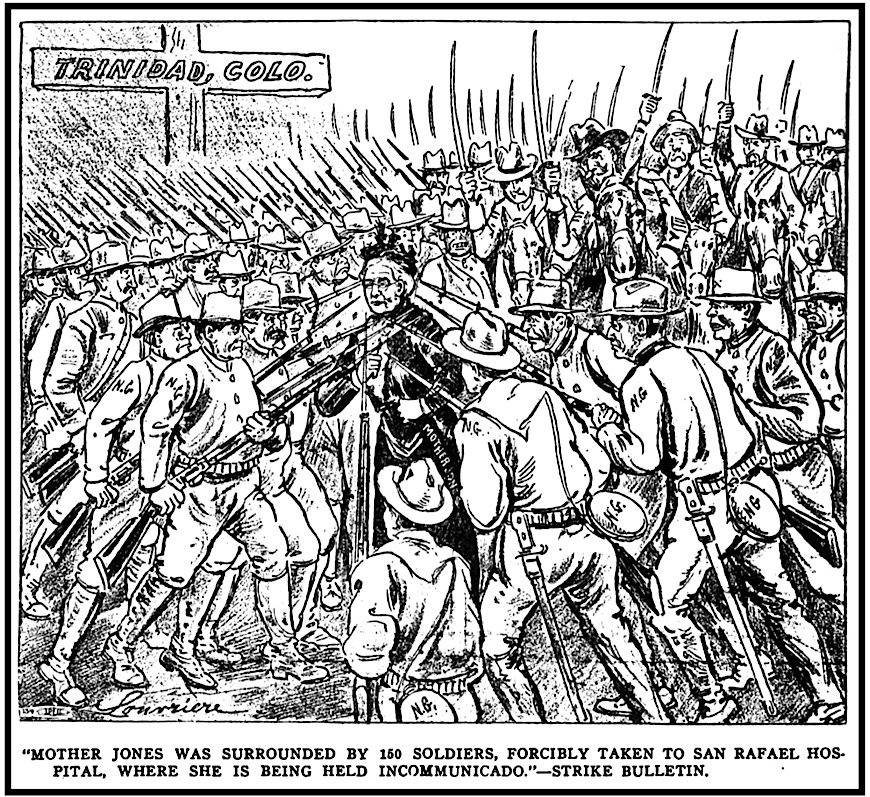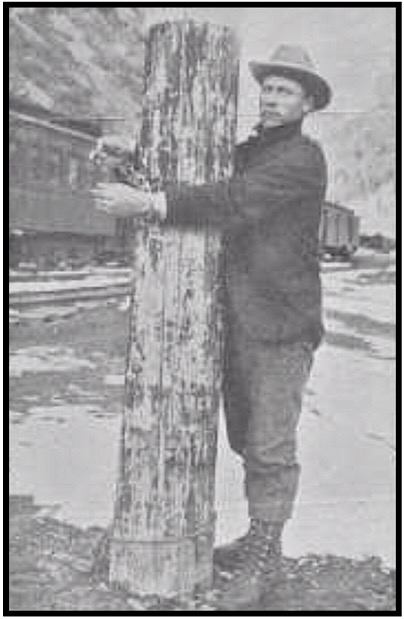 —————
—————
Hellraisers Journal – Tuesday March 17, 1914
Denver, Colorado – Testimony Reveals Murderous Mine Guards Terrorize Miners
From the Duluth Labor World of March 14, 1914:
SLAVERY REVEALED IN COLORADO MINES
———-
Startling Testimony Given Before
Congressional Committee In Coal Inquiry.
———-LIBERTY IS DENIED;
WORSE THAN RUSSIA
———-
Blacklist System Kept By Operators Exposed
-Coal Districts Managed by Tyrants.
———-
DENVER, Colo., March 13,-(Special Correspondence.)-Southern Colorado today is in a state of anarchy. Men are held slaves in the coal mines, terrorized by murderous mine guards and robbed of practically every cent of the small pittance they are paid. The striking coal miners are intimidated and murdered by the hired assassins of the operators, denied their constitutional rights by the militia of the state of Colorado. These and many other outrages were brought out by the congressional committee which closed its month’s investigation of the Colorado coal strike Saturday [March 7th].
Colorado’s Liberty (?)
For years the coal miners of the state have maintained that they had less personal liberty, less rights in Colorado than have the people of Russia. For the same length of time the papers of the state have denied these reports.
If there was any doubt in the minds of the people of Colorado as to the real conditions in the coal fields those ideas were dispelled by the oppressed witnesses who appeared before the congressional investigating committee.
The operators and their gunmen have run their lickspittles in office with such a high hand, with such utter disregard of the laws and human life that conditions as they exist seem impossible to the man who has not suffered or failed to spend some time in the district.
One of the just grievances of the miners, established by the men as well as mine superintendents and foremen, was that of short weights. Since the first mine was opened in the state it has been the common practice of the coal operators to steal from 400 to 800 pounds of coal from miners on each car.
Miners Were Discharged.
To offset this robbery the miners had a bill passed providing for checkweighman. When the miners sought to take advantage of this law they were promptly discharged or given such a poor room that they could not make a living and were forced to quit. Instead of abolishing this thievery of coal by the operators, the checkweighman law seemed to increase it for the operators were filled with a desire to demonstrate how they were superior to the law and could do as they pleased in a state where they owned a majority of the officials body and soul.
Probably one of the most notorious works of the operators exposed by the witnesses was the blacklist system that has always been in existence against union miners. After the 1903-4 strike 6,000 men were blacklisted and but few of them have been able to get work up to this time except where companies signed up with the union. Witnesses testified that superintendents at all of the mines in the state had a list of the union men. They told of going to mines, being refused work because they were union men and seeing scores of men employed while they stood there.
Owners Dominate Politics.
One of the most notorious conditions existing in the south has been the domination of politics by the coal companies. They own the courts, the juries and practically every other officer.
Jack McQuarry, a witness and who was deputy sheriff of Huerfano county for seven years, testified that when a man or number of men were killed in the mines, he was ordered to take the coroner to the superintendent and find out who he wanted on the jury, as well as what the verdict was to be.
When Jeff Farr [Sheriff of Huerfano County] and his ring did not have sufficient votes to carry an election, they voted the sheep in the hills or else arrested enough of their opponents to carry the election and held them until they promised to vote the way Sheriff Jeff Farr wanted them to.
It has always been common practice for the superintendent to take his men to the polls and vote the entire gang one way.
“Got” Mine Leader.
McQuarry told how in 1906 the deputies were told to “get” John R. Lawson, International Board Member of the United Mine Workers. They could find no legitimate reason for arresting Lawson so two deputies went up to him, stuck a gun in his pocket, and then arrested him for carrying concealed deadly weapons.
Tony Langowsky, a member of the union and spotter for the operators, threw a bomb into their camp when he testified that he and the mine guards framed up all the dynamite explosions which terrorized Sopris, Colo., for six weeks last fall.
The operators sent out the reports that these explosions were the work of the “lawless” strikers. Langowsky’s testimony absolutely fixes the blame for the outrages which have occurred in Southern Colorado on the operators, who have heretofore been convicted of every crime except that.
It is impossible to bring out even a small part of the testimony in one story. While the operators were convicted of every crime on the calendar, the militia of the state suffered like exposure.
[Photograph and emphasis added.]

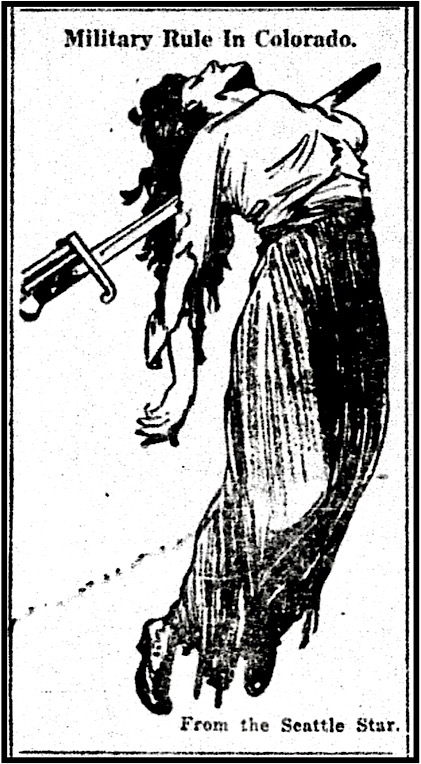
 —————
—————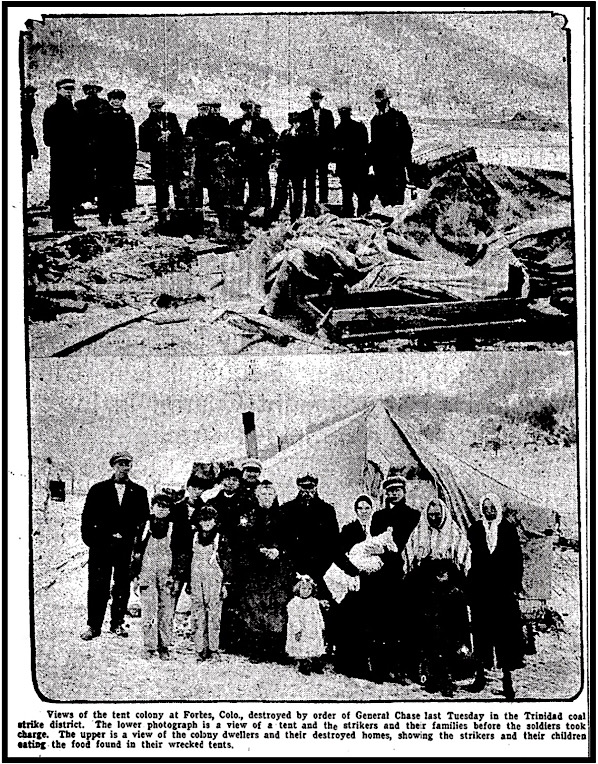
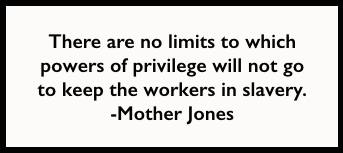 —————
————— —————
—————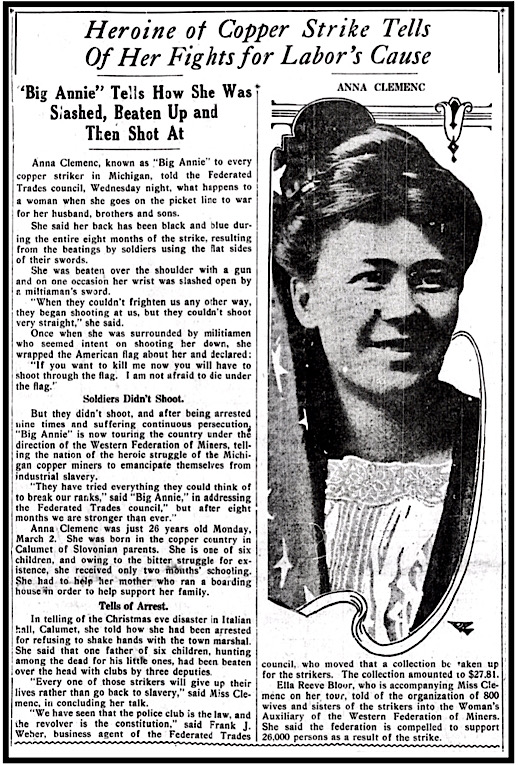
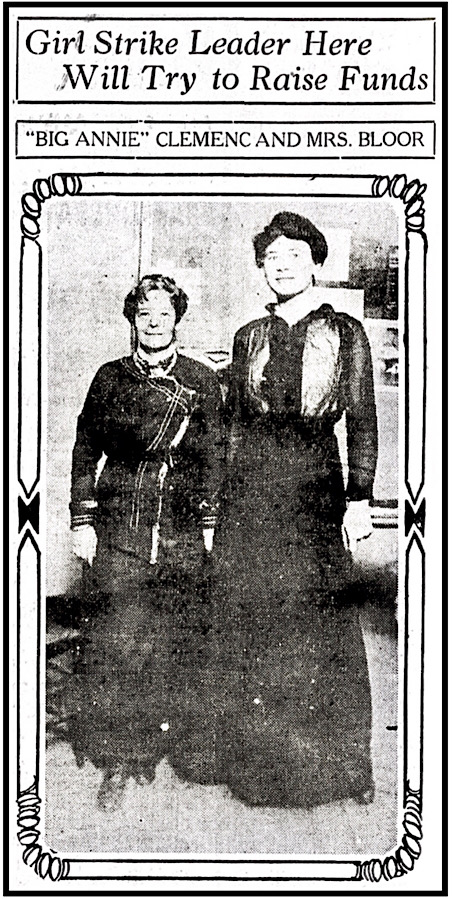
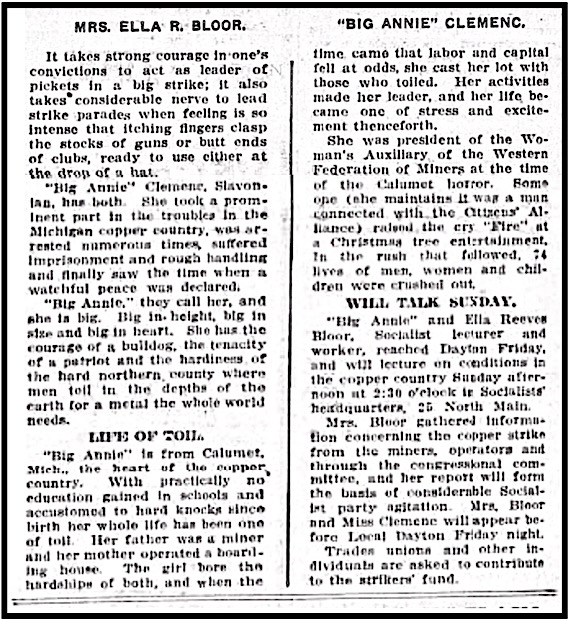
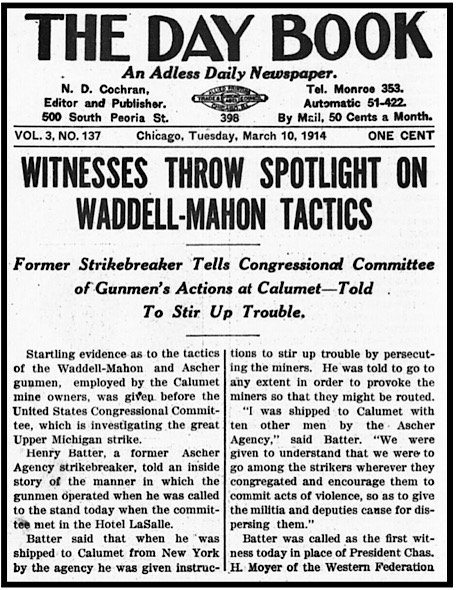
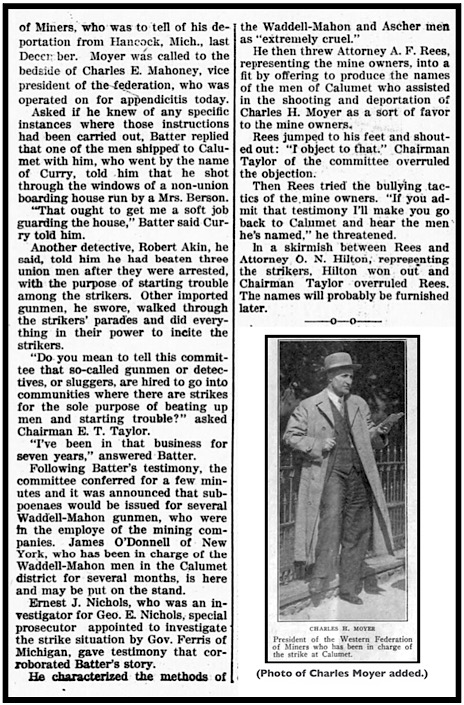
 —————
—————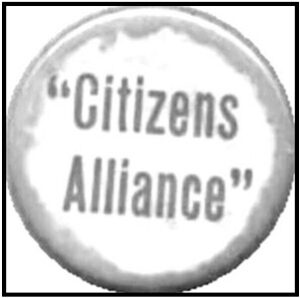
 —————
—————
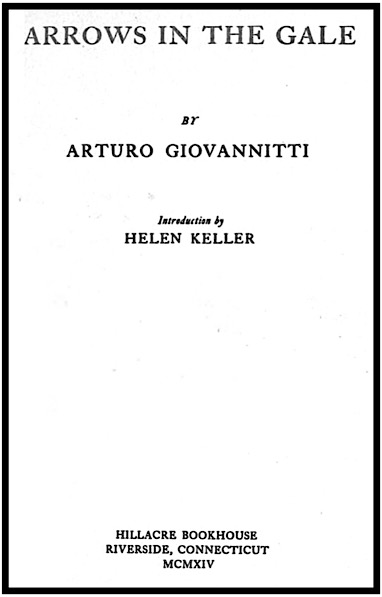
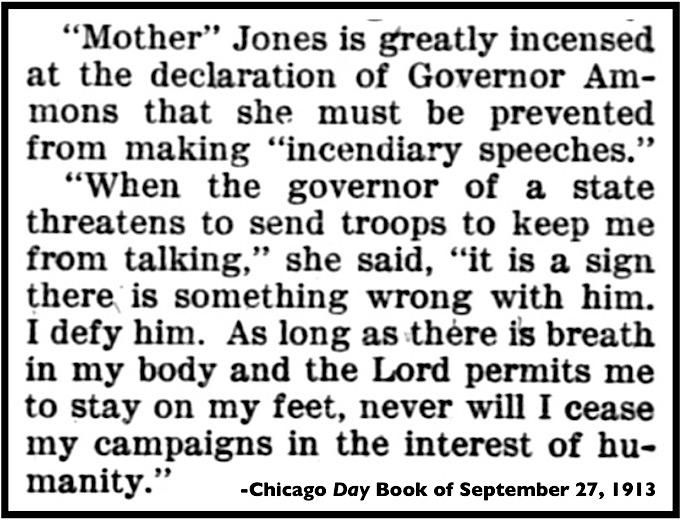 —————
—————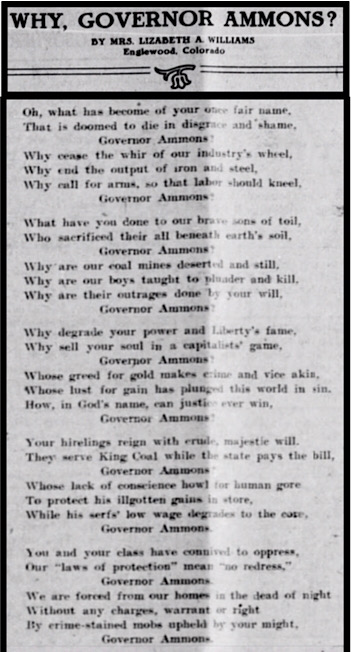
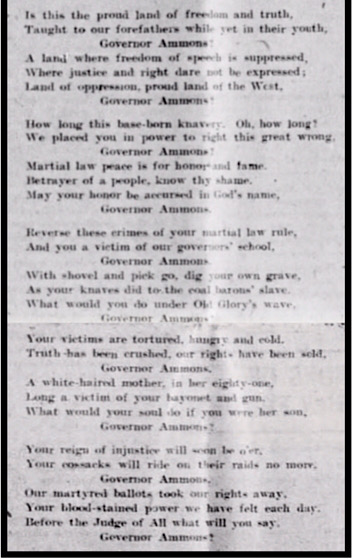
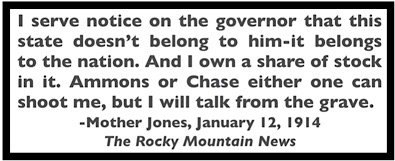 —————
—————